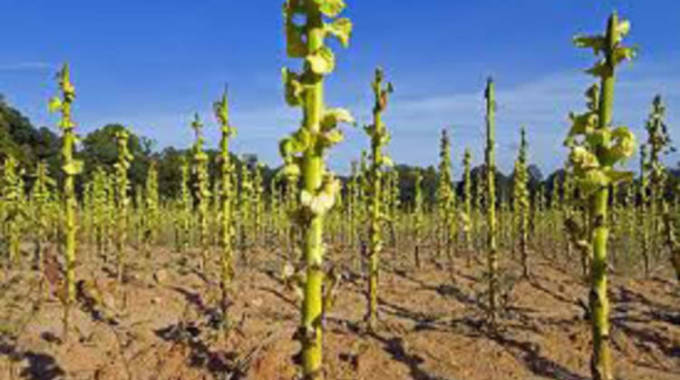Senior agronomist Lazarus Gatawa has renewed calls for farmers to remove tobacco stalks before the onset of the upcoming seedbed production phase.
Some tobacco farmers ignore the law and best advice of destroying tobacco stalks after reaping, allowing tobacco re-growth, which results in the spread of pests and diseases. All farmers are expected to comply because the danger of non-compliance by one farmer is that diseases and pests will still affect the next compliant farmers.
In an interview, Gatawa said tobacco farmers are currently delivering the crop to the floors, but as they do so, they are being urged to destroy the living plants left in the fields.
Farmers are also being advised to embrace crop rotation and hygienic practices in seedbeds for effective eradication and prevention of the spread of pests and diseases. Pests that can be prevented by stalk destruction include aphids and mealybugs. Diseases that will be prevented include Angular leaf spot, Black shank and Tobacco Mosaic Virus (TMV).
Gatawa said the Plant Pests and Disease Act (CAP 19:08) makes it mandatory for farmers to destroy all living tobacco plants by the May 15 deadline every year and failure to do so attracts a heavy fine. Farmers should also buy tested disease resistant seed from reliable sources like Kutsaga.
Tobacco stalks pass on diseases to the next season if not completely removed. A diseased crop is vulnerable to the effects of drought and has low capacity to adapt to long dry spells that are associated with climate change events thereby reducing the final leaf quality and yield. Removal of stalks and early land preparation are key interventions that farmers can do to help them increase their tobacco production to 3 ton per hectare yield levels in the face of uncertain weather events.
Agricultural Extension officers in tobacco growing areas are being encouraged to step up tobacco stalk destruction awareness programs among tobacco farmers so that the national production and quality levels keep improving to maintain Zimbabwe’s number 5 spot on the World highest tobacco producing countries. The local leadership including Councillors, village heads, farmer associations and youth, women leaders should take a leading role.

